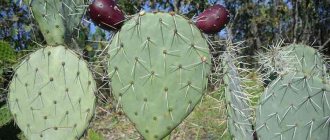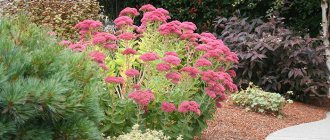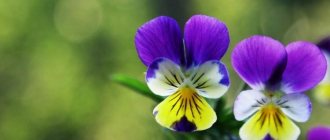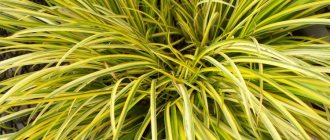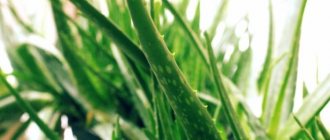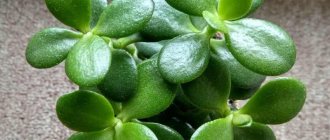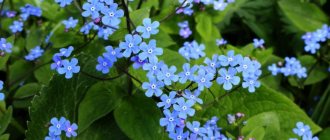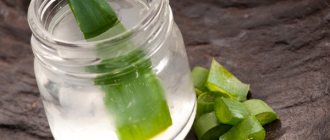Field bindweed is a rather pretty wild plant that blooms with pink and white bells. Whatever names people give to this plant. Most often, gardeners call it birch. At the same time, no one is happy if this weed has chosen his plot. Gramophone grass, felt grass, birch bark, dodder - all these are names of the same plant.
general description
This plant is distinguished by thin, numerous, spiral and climbing stems. It has a branching and tap root and oblong leaves, which are located on long petioles.
Field bindweed begins to bloom in late spring and continues almost until the end of autumn. The inflorescence opens in the morning when the weather is clear. If you see that the heads are tightly closed in the morning, it means that it will start raining soon. The plant bears fruits, which are a round capsule and contain poisonous seeds. Despite this, the fruits contain many useful substances.
Name
The scientific name of bindweed "convolvulus" is of Latin origin and means "that which curls up."
But it’s true that the stems of bindweed are capable of twisting very tightly around plants or any other support. And the familiar name “convolvulus” speaks for itself – a plant that climbs. In the Ukrainian language, the usual name for field bindweed is “birch”. People can also hear such names for this plant as “gramophone”, “toffee”, “felt grass”. There is a version of such an unusual name for bindweed as “cups of Our Lady”. The Brothers Grimm have a legend about a cab driver who used a bindweed flower instead of a glass to give the tired Virgin Mary something to drink.
For the gardener
Field bindweed is a dangerous and harmful perennial weed for all summer residents. Only in photographs does it look like a cute and harmless plant. It grows successfully on almost any soil. There are about 190 species of these weeds, but their differences are minor. Overall they are quite similar. Wrapping around the stem, field bindweed suppresses and shades all useful plants, including cereals.
Controlling this plant is very difficult. Thin, thread-like creeping roots penetrate deep into the ground. And the stems branch and creep, intertwining with useful plants, which complicates the fight against weeds. But let's look at this plant from the other side. Field bindweed is used for medicinal purposes, which means you need to consider its properties. Maybe someone will take a fresh look at the annoying plant and prepare it for future use for the winter.
Indoor
In a house or apartment you can grow indoor bindweed, which was specially bred for such conditions. This variety is very capricious. It cannot be kept outdoors - on a windowsill or balcony. Exposure to direct sunlight will cause the leaves to yellow and the root base to dry out. In addition, indoor birch loves moisture. Therefore, it needs to be watered and sprayed regularly. Young taffy can be safely bathed in the bathtub. These procedures must be done in winter, when the air in the apartment is dry due to heating. You need to place a pot with a flowerpot in a secluded place, because drafts are dangerous for it.
If you plant a vine in a container, then it should be placed on the south side of the house or closer to the east.
Caring for these three types of bindweed - field, garden and indoor - does not require much effort. This light-loving plant will be a worthy decoration for a personal plot or terrace.
Observations of traditional healers
We know about many plants thanks to the observation skills of our ancestors. They lived in harmony with nature, fed and were treated with its gifts. The healing properties of field bindweed have been known since ancient times. It was used to treat asthma, kidney and lung diseases. Traditional medicine was based on the positive results obtained.
The first information about the properties of bindweed came to us from the Middle Ages. Arab doctors quite widely used this plant as an astringent, blood vessel cleanser and stomach strengthener. A detailed description of bindweed is found in medieval treatises. Jaundice was treated with bindweed juice, and by adding seeds to the juice, an excellent remedy for fever was obtained. Infusions and decoctions were also used to treat cancer.
But today modern doctors have laboratories that allow them to obtain information about the composition of a particular plant and its effect on the body. It was possible to find out that the field bindweed plant exhibits excellent antispasmodic, anti-inflammatory, and hemostatic properties. It can also act as a local anesthetic. A photo of field bindweed will allow you to recognize it in the garden without any problems.
Beneficial features
Bindweed began to be used in the Middle Ages. Traditional healers, using products made from birch, improved the functioning of the stomach and cleansed blood vessels.
As a result of scientific research, the beneficial properties of garden bindweed have been established:
- eliminating dry eyes and restoring visual acuity;
- destruction of viruses and harmful microorganisms;
- normalization of sleep;
- strengthening the vascular wall;
- reducing the risk of heart and vascular pathologies and the severity of menopausal symptoms;
- prevention of the development of malignant tumors;
- improvement of intestinal permeability;
- relieving symptoms of PMS;
- Elimination of toothache and enamel sensitivity.
The following effects of birch are indicated:
- anti-inflammatory;
- sedative;
- choleretic;
- diaphoretic;
- hypotensive;
- laxative;
- anesthetic;
- detoxification;
- wound healing;
- restorative;
- antitumor.
The use of potions from gourd helps restore the body during ARVI.
How to use the plant
Today we are trying to destroy it with the help of modern drugs. And in the old days, our ancestors carefully collected birch trees throughout the season. The description of field bindweed today causes more negativity, because we have to fight this guest in the garden every year.
All parts of the plant have medicinal properties: roots, stems and leaves. It is very rich in various biologically active substances and compounds. All parts of bindweed contain substances such as flavonoids, convolvulin glycoside, vitamins (especially a lot of A, C and E). In addition, the composition contains bitterness and toxic alkaloids. That is why preparations with this plant must be taken carefully, carefully observing the dosage.
You can spend quite a long time looking at the rich composition of this simple-looking weed. The green part of the plant is rich in vitamin E and resinous substances, blood clotting substances, saponins and bitters. The capsule fruits, or rather the seeds of the plant, contain alkaloids and fatty oils. There are many different resins in the flowers. That's not all, we forgot about the root system. Bindweed roots are rich in tannins and various resins. Tinctures and decoctions based on them have a stimulating effect on the peripheral nervous system.
Tricolor
It is considered the most effective for planting in pots (containers). The combination of blue (ultramarine shade) and white shade with a fiery yellow (lemon) center makes it unique. Thanks to this coloring, it flaunts magnificently on the terraces and flowerbeds of megalopolises. Bindweed tricolor is an annual that grows up to 50 cm tall. The stems are strewn with dense greenery. The bluish-green leaves provide an amazing backdrop for large, variegated flowers with wavy edges. They reach 5 cm in diameter. Among other things, there are three more varieties of tricolor loach:
- "Blue" and "Rainbow" Flash. Both flowers and leaves grow as densely as possible, forming spherical bushes.
- "Royal Ensign". The flowers are dark in color - velvety purple flowers with a characteristic black tint.
- "Crimson Monarch". Bright crimson shade of inflorescences.
These are the fastest growing ornamental species. In 2-3 months, the rhizomes grow up to 2 meters deep. If they tear, they form new shoots.
Bindweed is an annual plant that is grown from seeds. Due to the fact that this variety is low-growing, it has many lateral shoots. Therefore, such specimens resemble the shape of a sphere. They look amazing on terraces, windows or loggias.
Dosage forms
As a medicine, bindweed herb is used in the form of decoctions, infusions and powder. They also make medicinal ointments. For their production, grass and roots are most often used. Preparations from bindweed are a broad-spectrum remedy. They have choleretic, laxative and diuretic effects. This is an excellent remedy for lowering blood pressure. The seeds of the plant have a positive effect on intestinal functions and peristalsis.
Preparation of medicinal raw materials
Photos and descriptions of field bindweed make it possible to understand exactly what kind of plant we are talking about. It grows not only in gardens, but also along roads, in forest clearings and forest edges. It can be harvested for grass during the entire flowering period. But it is best to dig up the roots in spring and autumn.
Herbaceous stems need to be sorted out and damaged leaves and twigs removed. Cut them into pieces. To dry, the roots need to be sorted out and pre-rinsed. Plant materials are dried under a canopy, on a clean sheet. The resulting raw material has a bitter taste; it can be poured into a glass jar or cotton bag. This way the medicinal plant can last for a long time, maintaining its properties.
Growing
Tricolor bindweed grows well on cultivated loams, sandy loams and even chalk soils, i.e. tolerates soils from slightly acidic to slightly alkaline (pH 6.0-7.8). Loves sunny places, but can tolerate some partial shade, especially in the middle of the day. The plant is quite drought-resistant and heat-resistant, although the optimal temperature for its development is +20°C.
It is rarely affected by pests and diseases, only occasionally by aphids or spider mites. With large differences in day and night temperatures, powdery mildew may appear.
Folk recipes
Before use, do not forget to study the medicinal properties of field bindweed and contraindications. This is a poisonous plant and, despite the fact that the concentration of toxins is low, it is prohibited for use by pregnant and lactating women. In case of individual intolerance to components or allergic reactions, it is also necessary to choose an alternative.
- An ointment based on fresh plant juice and butter is used for pneumonia and otitis media.
- Decoctions work great with all kinds of skin diseases: rashes, lichen, scabies.
- For toothache, make an infusion from the root. To do this, pour a glass of boiling water over a spoonful of crushed root and leave for 20 minutes. You should rinse your mouth with this mixture twice a day.
- To treat chronic bladder diseases, you need to take bindweed, yarrow, lingonberry and bearberry herbs in equal quantities. Mix everything well. Take two tablespoons of the mixture and pour three glasses of boiling water. After two hours, you can strain and drink a glass three times a day.
- It is better to use fresh herbs to treat asthma. You need to take a tablespoon of well-chopped herbs and pour a glass of boiling water. After an hour you can strain. Divide the resulting raw material into 4 parts and drink throughout the day.
Contraindications and side effects
Not only expectant and nursing mothers should be careful. It is necessary to consult a doctor and strictly adhere to the recommended dosage. If you exceed it, vomiting and diarrhea, severe pain in the abdominal area may develop. The chemical elements contained in bindweed can only be excreted by the kidneys, which has an extremely negative effect on hard-working organs and leads to their disease.
The seeds are the most toxic, they affect the nerves, and those located under the tongue are most often affected. Because of this, speech problems may develop. And of course, the expectant mother should not consider this plant as a medicine. Its use leads to miscarriages.
Garden bindweed
This type of toffee is distinguished by a variety of bright and contrasting colors. This flowering carpet can be used to decorate an unsightly slope in your dacha. Very often, uncultivated plots of land remain empty in vegetable gardens. Why not use garden bindweed to beautify your garden. In the garden they can decorate alleys. Curly blue or white borders made of loach will add some pomp to the corner of paradise. Designers recommend making a screen or partition from these plants. It perfectly separates one part of the garden from another or serves as a shade for other crops.
One branch is enough to grow golden weed in a container. Then it has more space to grow and create a thick, luxurious cascade.
Summer vines are dependent on sunlight. Thus, the bindweed flower closes and curls if it is cloudy or raining outside. Although this plant is unpretentious, there are still some features of its planting and cultivation:
- sowing months - April or May;
- loose soil with clay or sand;
- Before planting, the seeds are soaked for 24 hours;
- furrow depth up to 5-8 cm;
- between the beds there should be from 50 to 60 cm;
- for covering, a special covering material is used, which is watered on top;
- after 7 days sprouts appear;
- when the gatherings rise above the ground to 3 cm, they need to be thinned out (optimal distance 25 cm);
- The shelter should be removed after the last frost has passed.
If white streaks appear on the greenery, it means that the vine has been affected by powdery mildew. Several treatments with fungicidal agents will destroy the pest.
It is important to water bindweed correctly; a photo of this variety for vertical gardening is given below. You should not flood the beds too much, because this leads to the growth of greenery, not inflorescences. However, due to a lack of moisture, the buds will fall off. Without feeding, the flowers will grow small and faded. Therefore, before planting, the soil is fertilized with peat. The soil is sprinkled with wood ash when the toffee shoots buds. The beds are treated with complex fertilizers (nitrogen or potassium) once every two weeks. The substrate is laid out on the soil and then washed off with water using a watering can.
To plant seedlings in the ground, you need to sow the seeds in a container in early March. Containers should be stored in a warm and sunny place and watered regularly.
